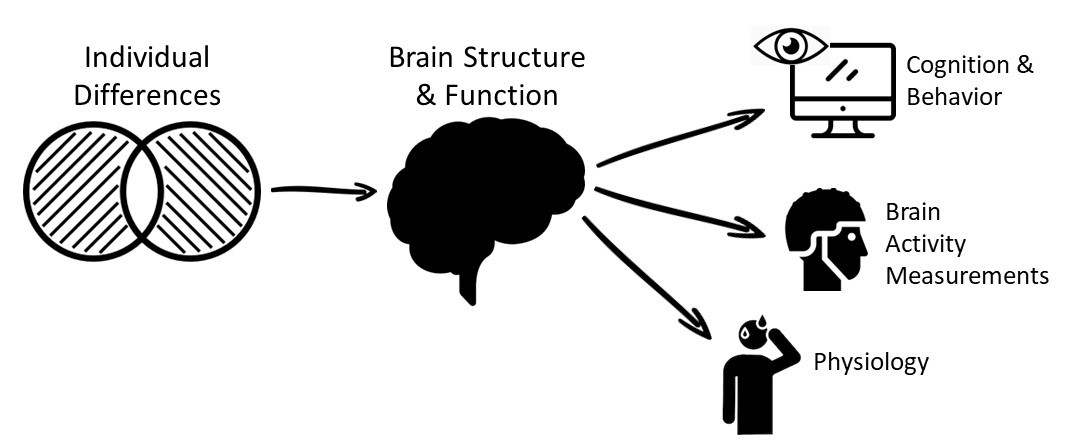Our research focuses on the study of individual differences with an emphasis on temperament and cognition.
At SHU CAN we are interested in the processes that underlie individual variation in cognitive control. Our lab utilizes a multi-disciplinary approach to addressing research questions by combining cognitive and behavioral methods (computerized tasks, implicit learning, eye tracking), with measurements of brain activity (fNIRS, fMRI) and peripheral physiology measurements (galvanic skin response, respiration, heart rate) to better understand the cognitive processes and related neural structures that cognitive control deficits in young, healthy, and older adults.

Current Research
Cognition and Behavior:
Through the use of carefully designed behavioral tasks we make inferences about the underlying neural processes that drive performance disparities in our participants.. Our lab uses tasks that measure basic learning and memory processes, as well as those that assess the role of motivational and attentional mechanisms such as inhibition and avoidance. Many of our experimental paradigms resemble simple computer “games,” engaging participants in responding to stimuli displayed on the screen. Further, we often combine these tasks with eye-tracking methodologies to gain additional insight into participant’s attention and cognition.
Neuroimaging Research Studies:
fNIRS: Functional near-infrared spectroscopy (fNIRS) is a non-invasive means of measuring cortical brain activity in humans. Our lab uses fNIRS in combination with physiological measures of stress and computerized tasks to further examine individual differences in neural functioning of the prefrontal cortex and cerebellum.
fMRI Modeling, Hypothesis Testing, and Analysis: Our lab utilizes resting-state functional MRI and behavioral data from large, open-source databases (such as the Cam-CAN database) to test theoretical models of functional connectivity and generate new hypotheses examining behavior, aging, and connectivity.
Physiological Research Studies:
Acoustic Startle Reactivity:To examine physiological changes associated with brain injury, we are using electromyography to measure the startle response in participants with and without a history of brain injury.
Current Collaborations
Individual differences in boundary extension: The role of behavioral inhibition: We are studying whether behavioral inhibition leads to individual differences in the boundary extension phenomena. Using eye tracking, we are examining the attentional processes that may underlie susceptibility to the boundary extension error. This project is in collaboration with Dr. Helene Intraub and the Spatial Cognition Lab at the University of Delaware and Dr. Irene Kan and the Cognitive Neuroscience of Memory lab at Villanova University.
Resting state functional connectivity changes in older adults: We are exploring individual differences in resting state connectivity between typical aging adults and “superagers”. This project is in collaboration with Dr. Evangelia Chrysikou and the Chrysikou Lab at Drexel University and Dr. Irene Kan and the Cognitive Neuroscience of Memory lab at Villanova University.
Understanding cognitive change after traumatic brain injury and post-traumatic stress disorder: Many of our tasks are developed in collaboration with scientists at US Veterans Affairs and the Myers Lab, with the intention of utilizing these tasks in samples of Veterans to improve understanding of PTSD and brain injury, both from a treatment perspective and to evaluate risk.